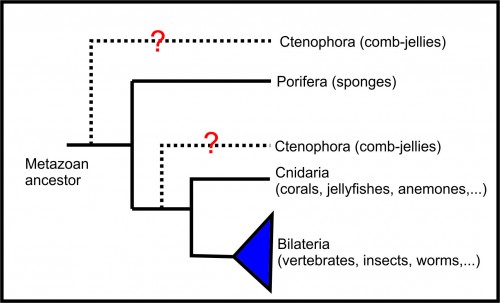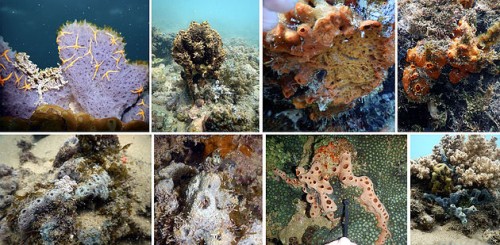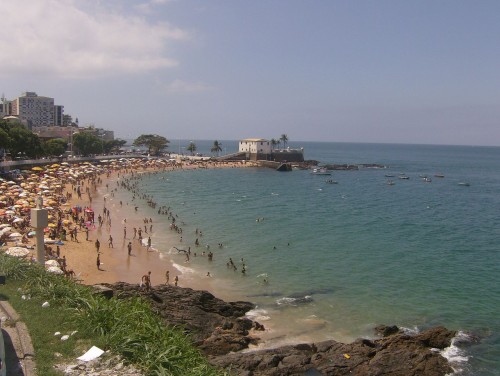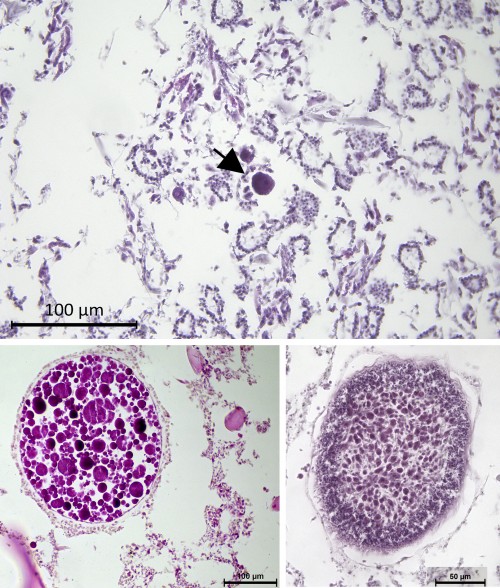A day in the life of a sponge lab (yes, there are labs devoted to these animals!)
Posted by emiliolanna, on 24 August 2016
Forget about those large amounts of bottles containing thousands of flies, those huge piles of boxes containing different lineages of mice or large tanks filled with happy-hopping frogs. Also, forget about transgenic, mutant, knockout litters… what I am going to tell you is the routine of an emergent lab working (or, better, trying to) with emergent models that you probably haven’t heard about for a while.
My name is Emilio Lanna and I am a young faculty at the Biology Institute in Federal University of Bahia (UFBA) in Salvador, Bahia, Brazil. I coordinate the Embryology and Reproductive Biology lab (LEBR), which currently consists of four grad students and four undergrads; all of them focused in understand the evolution of sponge development and life history.
Sponges (phylum Porifera) are aquatic animals living in the bottom of the oceans (you can find some species in freshwater, too). They are morphologically very simple, having a body adapted to pump as much water as possible to get their aliment, get rid of toxic metabolites, and even reproduce. However, although morphologically simple, their genomes are complex and similar to those of other animals. It is very important to study the development of sponges if we are to understand the evolution of animals as whole, as this group is considered the sister-group of all other metazoans (Figure 1, BUT you may find divergent opinions about that, especially those that put ctenophorans as the sister-group of all metazoans, but this is a history for another time). Their development may also shed light on the ecology and conservation of those animals. And, from an anthropocentric perspective, sponges are a rich source of natural products with a broad range of potential application in pharmaceutics, cosmetics and bioproducts. Last, but not least, the sponges’ cells have the ability to differentiate into other cell types in any stage of their life cycle. Therefore, understanding the mechanisms of cell differentiation in these animals could help us to treat cancer and advance tissue regeneration therapies. Therefore, although they are mainly interesting from an evo-devo perspective, there is a potential for medical application for the knowledge generated studying sponge development.

As stated before, we are working with emerging models. We are currently investigating ten different species belonging to two different classes and six orders of Porifera (Figure 2). Before starting our work, we knew nothing about the reproductive biology of these species. Even simple questions such as: “when?”, “how often?”, “how much?” and “how do they reproduce?” were never addressed by other investigators before. So, we are doing a lot of early and basic research here. To do that, the work in our lab always starts with the students heading to a gorgeous beach close to the campus (Figure 3). We usually plan the sampling looking at a tide table, in order to choose the time when the distance of the surface and the bottom is the lowest possible, because we are going to skin dive. No special gear is necessary, as the seawater in Salvador is always around 24-26 ºC (75-79 ºF). Diving is not always necessary, as there are some of the species that hang on nautical ropes in nearby harbour and others that are directly collected in a flat rocky substrate during the low tide. IMPORTANT! Before any sponge collection we have to register the sampling campaign in an online platform of the Brazilian Environmental Ministry.


The dive can have different objectives and the after-dive work will depend on these. The most usual is to collect pieces of sponges for histological procedures. In this case, the samples are fixed in saline formaline and brought to the lab, where they are processed through standard protocols. The material is then observed with a compound microscope to search for the reproductive elements (eggs, sperm cells, embryos and larvae). Sponges lack any organs, and gonads or reproductive compartments are always absent. Gametes and embryos, when present, are found spread throughout the somatic tissue of the organism and the researcher has to quickly learn how to differentiate a choanocyte (a typical somatic cell) from spermatozoa and to find embryos among the choanocyte chambers (Figure 4). We can count these elements to answer the questions on when, how often and how much the species reproduce, but this procedure tells us little about the gametogenesis and embryogenesis.

To describe gametogenesis and embryogenesis, we are doing electron microscopy and planning three-dimensional reconstruction using a confocal microscope (using DAPI). For the electron microscopy (EM), we take two pieces of the same sponge: one is fixed for EM (with standard fixative cocktails) and other for histology. We first confirm that the reproductive elements are present through the histological slides, because it’s cheaper and routine in our lab. To prepare the samples for EM we have to take them to another lab in another institution (Fiocruz-BA). There, the wonderful crew of technicians do the hard work for us and we have only to check the semithin sections and then go to spend productive hours sitting in front of the screens of the scanning or transmission EM.
In the last few months we started another approach, which has been, at the same time, both challenging and very interesting. We are putting larval traps above the sponges in the field to collect the free-swimming larvae of these animals. We go to this beach few hours before the sunset and set the traps around the sponge. The traps lay there till the next morning when we dive again to collect conical tubes filled with 0.1-0.5 mm long larvae. These tubes are taken to the lab, where we observe the ciliated larvae swimming in circular pattern for hours. Then, with a lot of patience, we observe them to settle, metamorphose and start their development. We do that with direct observation, fixing in different periods and through time-lapse imaging. The larvae lack a functional aquiferous system (the one used to pump water). As the development of this trait is little understood, we are going to investigate the morphogenesis and dynamics of development of this system. We are currently staging the development of three species and are also planning to disturb their development applying drugs and physical disruptors.
As you could see till here, our lab is not what a canonical student of developmental biology might expect to find in a developmental biology lab. We are getting there, though. In a few months, we expect to sequence the transcriptome of different stages and parts of one of the species. After that, we are also planning to do some in situ hybridizations to check which cell type express key developmental genes. Until those issues become routine in our lab, they cannot be described here… so, I may come back in the future.
If you have any question or comment, please send me a message. I´ll be glad to chat with you!
Cheers from Salvador,
Emilio


 (14 votes)
(14 votes)
Dear Emilio,
Thanks for sharing the current research of your lab. Very interesting and innovative research. And very promising ideas. Congrats for your work!